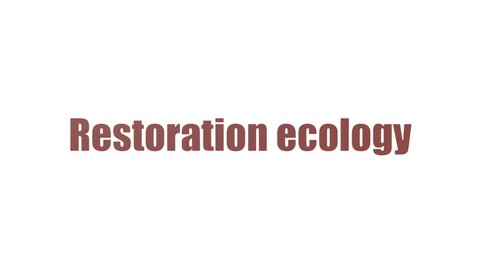Seagrass Restoration: Reviving Scotland's Coastal Ecosystems Through Planting

Table of Contents
The Importance of Seagrass Meadows in Scotland
Seagrass meadows are often overlooked, yet they play a vital role in the health and prosperity of Scotland's coastal waters. Their significance extends far beyond their aesthetic beauty.
Biodiversity Hotspots: Scottish Seagrass Biodiversity
Seagrass meadows are incredibly productive ecosystems, acting as bustling nurseries and providing crucial habitats for a vast array of marine life. They support a complex food web, benefiting numerous species.
- Increased fish stocks: Many commercially important fish species rely on seagrass for breeding and juvenile development. Protecting seagrass means protecting fish populations.
- Enhanced shellfish populations: Seagrass provides a rich habitat for various shellfish, contributing to both biodiversity and local economies.
- Refuge for juvenile fish: The dense structure of seagrass provides shelter from predators, allowing juvenile fish to grow and thrive. This is vital for maintaining healthy fish populations.
These benefits directly contribute to the overall health of the Scottish seagrass biodiversity and the wider marine ecosystem.
Seagrass Carbon Sequestration: Climate Change Solutions
Beyond their role in supporting marine life, seagrass meadows are exceptionally efficient at capturing and storing atmospheric carbon dioxide. This "blue carbon" sequestration is a powerful tool in mitigating climate change.
- Carbon sink capacity: Seagrass meadows are remarkably effective carbon sinks, storing carbon at rates comparable to, or even exceeding, those of terrestrial forests.
- Climate change mitigation: By sequestering significant amounts of CO2, seagrass helps to reduce the impact of greenhouse gases and slow the pace of climate change.
- Blue carbon ecosystem services: The carbon sequestration capacity of seagrass highlights the critical role of marine ecosystems in tackling climate change. Protecting and restoring these habitats is a crucial element of climate change mitigation strategies.
Seagrass Coastal Protection: Shoreline Stabilization
Seagrass meadows also offer significant coastal protection services, acting as natural buffers against the erosive forces of waves and currents.
- Erosion control: The dense root systems of seagrass help to stabilize sediments, reducing coastal erosion and protecting valuable shorelines.
- Storm surge protection: Seagrass meadows can significantly reduce the impact of storm surges, protecting coastal communities and infrastructure from damage.
- Coastal resilience: By enhancing coastal resilience, seagrass restoration contributes to the long-term sustainability and protection of Scotland's coastlines.
Seagrass Restoration Techniques in Scotland
Restoring degraded seagrass meadows requires careful planning and the application of appropriate techniques. Several methods are currently employed in Scotland.
Seagrass Seed Propagation: Restoration Techniques
Successful seagrass restoration relies heavily on the sustainable collection and propagation of seagrass seeds.
- Seed banks: Establishing seed banks ensures a readily available source of seeds for restoration projects.
- Laboratory propagation: Seagrass seeds can be propagated in controlled laboratory settings to increase the number of seedlings available for transplantation.
- Nursery cultivation: Nurseries provide a safe environment for young seagrass plants to grow before being transplanted to restoration sites.
Seagrass Transplantation: Restoration Methodology
Several methods are used to transplant seagrass into restoration areas, each with its own advantages and disadvantages.
- Plug planting: Small plugs of seagrass are transplanted into the seabed, a relatively straightforward method.
- Seed dispersal: Seeds are dispersed directly onto the seabed, relying on natural processes for establishment.
- Rhizome fragmentation: Sections of seagrass rhizomes (underground stems) are fragmented and replanted to encourage growth.
Seagrass Monitoring: Project Evaluation
Ongoing monitoring is crucial to assess the success of restoration efforts and to inform future projects.
- Growth monitoring: Regular assessments of seagrass growth rates are essential to evaluate the effectiveness of restoration techniques.
- Species diversity assessment: Monitoring the diversity of associated species helps to evaluate the overall health of the restored meadow.
- Survival rates: Tracking survival rates provides crucial insights into the success of transplantation efforts and identifies areas for improvement.
Benefits of Seagrass Restoration Projects in Scotland
Seagrass restoration projects in Scotland deliver a multitude of benefits, both environmentally and economically.
Seagrass Economic Benefits: Coastal Community Development
Restored seagrass meadows have the potential to significantly boost local economies.
- Increased fish stocks: Improved fish populations support sustainable fisheries and create economic opportunities.
- Improved tourism: Healthy seagrass meadows enhance the attractiveness of coastal areas, boosting tourism revenue.
- Employment opportunities: Seagrass restoration projects themselves create employment opportunities in coastal communities.
Seagrass Environmental Benefits: Ecosystem Restoration
The environmental benefits of seagrass restoration are far-reaching and crucial for a healthy marine environment.
- Improved water clarity: Seagrass helps to filter out pollutants, improving water quality.
- Increased biodiversity: Restored meadows support a greater diversity of marine life.
- Enhanced coastal protection: Strengthened coastal defenses protect communities and infrastructure from damage.
Conclusion
Seagrass restoration in Scotland offers a powerful, multi-faceted approach to tackling environmental challenges. By investing in these projects, we can combat climate change, protect biodiversity, and enhance the resilience of our valuable coastal ecosystems. Let's work together to support and expand seagrass restoration initiatives across Scotland. Participate in local projects, donate to organizations dedicated to seagrass conservation, or simply raise awareness about the importance of these vital underwater meadows. Get involved in seagrass restoration in Scotland today and help revive our coastal ecosystems through planting!

Featured Posts
-
 Bradley Cooper And Gigi Hadid New Couple Alert Instagram Photo Sparks Dating Rumors
May 05, 2025
Bradley Cooper And Gigi Hadid New Couple Alert Instagram Photo Sparks Dating Rumors
May 05, 2025 -
 Heavyweight Showdown Ajagbas Fierce Talk Ahead Of Bakole Battle
May 05, 2025
Heavyweight Showdown Ajagbas Fierce Talk Ahead Of Bakole Battle
May 05, 2025 -
 Your Guide To Ufc Des Moines Predictions And Betting Strategies
May 05, 2025
Your Guide To Ufc Des Moines Predictions And Betting Strategies
May 05, 2025 -
 Your Guide To The Ufc May 2025 Fight Schedule Ufc 315 And More
May 05, 2025
Your Guide To The Ufc May 2025 Fight Schedule Ufc 315 And More
May 05, 2025 -
 Review The Count Of Monte Cristo Revenge Adventure And Justice
May 05, 2025
Review The Count Of Monte Cristo Revenge Adventure And Justice
May 05, 2025
